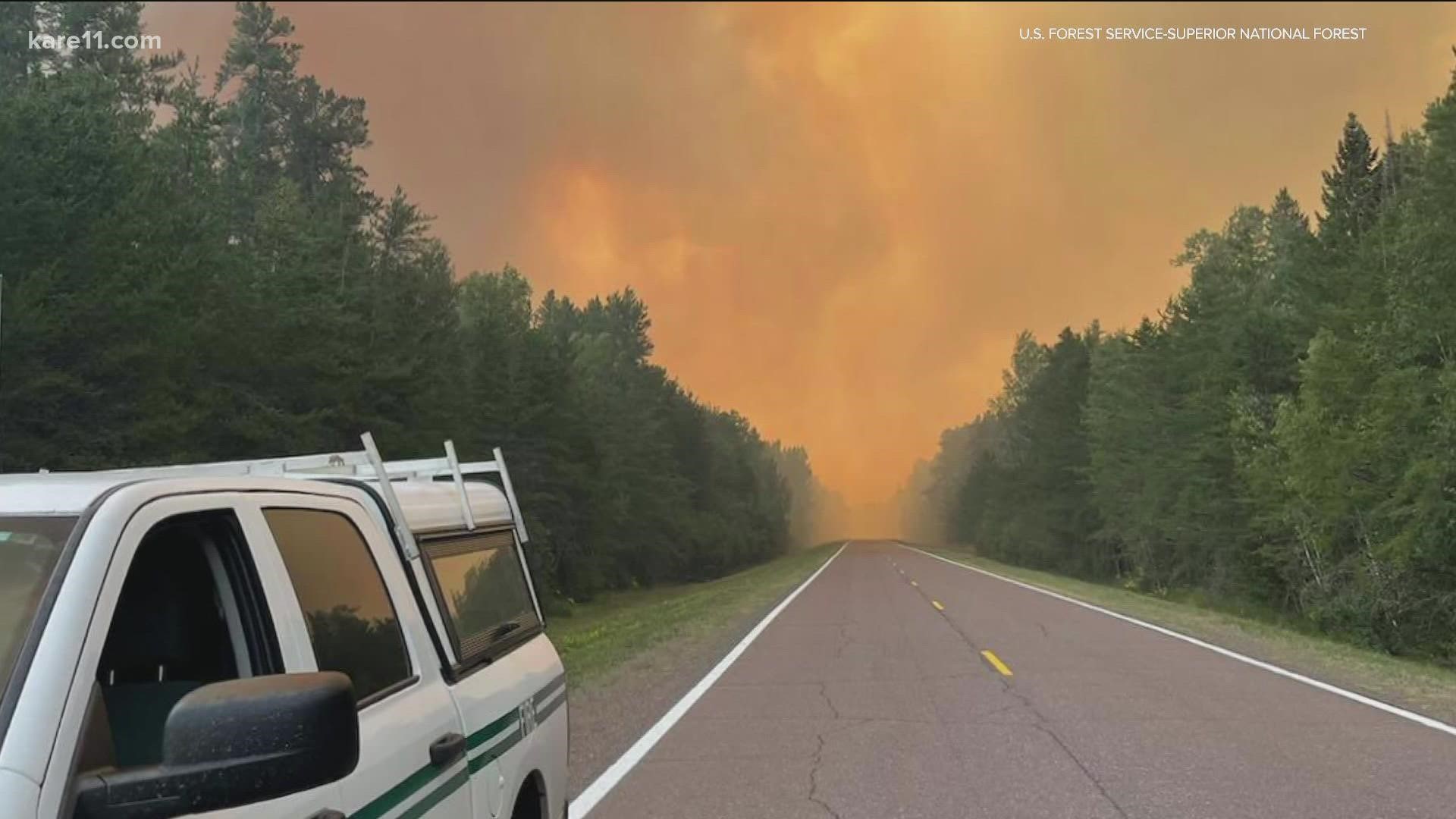MINNEAPOLIS — Editor's Note: The video above originally aired on Aug. 21, 2021.
Temperatures this spring have been hot to say the least, and with record heat expected Monday with some areas reaching into the upper 90s and lower 100s, fire danger is something most Minnesotans should keep on their radar as summer is just around the corner.
The Minnesota Department of Natural Resources (DNR) reported Monday that counties around the metro area are currently under moderate or high fire danger, including Anoka, Hennepin and Ramsey counties.
Counties under “moderate” danger reside where “fires start easily and spread at a moderate rate”, and “high” risk conditions include those where “fires start easily and spread at a fast rate,” the Minnesota DNR said.
And the high temperatures that have continued to affect Minnesotans' lives make for a perfect ingredient in a wildfire recipe.
Windy conditions are among the other “ingredients” that help ignite and fuel a wildfire.
Both elements have been present in Alaska and the southwestern U.S. recently where fire officials continue to battle 32 active large fires that have already burned 1.6 million acres in five states, according to the National Interagency Fire Center.
As of June 17, 2022, there have been 30,449 fires that have burned land in the U.S, the most in a decade year-to-date, the fire center reported.
For a more detailed map on where wildfires are present in the U.S., visit the Fire Weather and Avalanche’s website.
And according to the Minnesota DNR, humans are too blame. The department reports that people cause 90% of Minnesota fires.
In order to reduce the creation and spread of wildfires, the State of Minnesota requires all residents to purchase a permit whether you are burning anything from brush to a small pile of dry leaves. However, there are certain circumstances when a permit is not needed.
The American Red Cross also has some tips on how to reduce the chance of wildfires:
- Never leave a fire unattended, such as overnight.
- Don’t start a burn on a windy day. Save it for another time.
- Douse used fireworks with water to make sure they are completely extinguished.
- Don’t allow gasoline or motor oil to spill on grass or other vegetation.
If you see any unauthorized fires, call 911. An early report helps keep fires small, the Minnesota DNR says.
Watch more WeatherMinds:
Watch the latest deep-dives and explainers on weather and science in our YouTube playlist:

